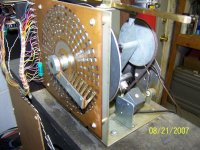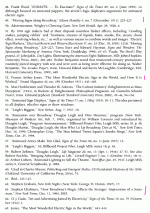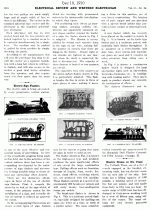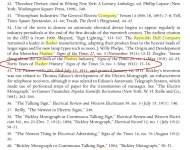I had one of these electromechanical marvels (or monsters depending on your point of view) back in the late 60's. I had long forgotten about it until an advert from Ebay arrived in my inbox today trying to sell me one for a large sum of money.
People tend to think of the drum machine as a recent invention made possible by digital technology, and made popular by the Synthpop and EDM crowd from the 90's and 2000's. The Wurli Sideman was the first drum machine in 1959.
A drum machine is a collection of sound generators (or one digital sound player) that make drum or other percussion sounds when triggered. The trigger source is usually a sequencer of some sort with several canned "programs" controlling the sequence, and a knob to control the speed of the sequence in BPM.
The Wurlitzer Sideman used tubes, caps and resistors to make the drum sounds. The "sequencer" was a series of patterns on a circular PC board and a pickup arm spinning in the center of that circle spun by a variable speed motor. Pure genius in 1959 when it came out, but completely worn out after a few years of serious use. See picture.
I got mine from the dumpster behind Victor Pianos and Organs in Miami sometime in the late 60's. A few tubes and caps later and the electronics were operational. You could bang out a drum pattern on the buttons, but they were somewhat worn and missed triggers were common. I had replaced the worn wipers on the spinning rotor with pieces of guitar string, and had soldered little pieces of copper in worn spots on the board, but the 6 or 7 pre-canned sequences just didn't work for surf or 60's rock music, so the Sideman sat unused in my room most of the time.
I would get the brilliant idea to rebuild the sequencer using one of the rotary stepper relays from a telephone switch system around 1970, but they didn't hold a constant speed, so the project died.
Somewhere around 1972 I learned about a cool new IC chip called the 555. Maybe it and a box full of newly acquired reed relays from a telephone switch would be the key to the new sequencer.....
Sadly the relationship between myself and my parents would break down and I left home with whatever I could stuff into my car and the Wurli didn't make the cut. They would trash it and everything else shortly after that.....and the Wurli was soon forgotten.
The Ebay ad, and some Googling reminded me of why I kept tinkering with it. These would be cool sounds in the early 70's.
Wurlitzer Sideman DRUM MACHINE 1959, Grandfather of the MPC60 | eBay
YouTube
People tend to think of the drum machine as a recent invention made possible by digital technology, and made popular by the Synthpop and EDM crowd from the 90's and 2000's. The Wurli Sideman was the first drum machine in 1959.
A drum machine is a collection of sound generators (or one digital sound player) that make drum or other percussion sounds when triggered. The trigger source is usually a sequencer of some sort with several canned "programs" controlling the sequence, and a knob to control the speed of the sequence in BPM.
The Wurlitzer Sideman used tubes, caps and resistors to make the drum sounds. The "sequencer" was a series of patterns on a circular PC board and a pickup arm spinning in the center of that circle spun by a variable speed motor. Pure genius in 1959 when it came out, but completely worn out after a few years of serious use. See picture.
I got mine from the dumpster behind Victor Pianos and Organs in Miami sometime in the late 60's. A few tubes and caps later and the electronics were operational. You could bang out a drum pattern on the buttons, but they were somewhat worn and missed triggers were common. I had replaced the worn wipers on the spinning rotor with pieces of guitar string, and had soldered little pieces of copper in worn spots on the board, but the 6 or 7 pre-canned sequences just didn't work for surf or 60's rock music, so the Sideman sat unused in my room most of the time.
I would get the brilliant idea to rebuild the sequencer using one of the rotary stepper relays from a telephone switch system around 1970, but they didn't hold a constant speed, so the project died.
Somewhere around 1972 I learned about a cool new IC chip called the 555. Maybe it and a box full of newly acquired reed relays from a telephone switch would be the key to the new sequencer.....
Sadly the relationship between myself and my parents would break down and I left home with whatever I could stuff into my car and the Wurli didn't make the cut. They would trash it and everything else shortly after that.....and the Wurli was soon forgotten.
The Ebay ad, and some Googling reminded me of why I kept tinkering with it. These would be cool sounds in the early 70's.
Wurlitzer Sideman DRUM MACHINE 1959, Grandfather of the MPC60 | eBay
YouTube
Attachments
Oh, gee, a hard contact drum machine! Hilarious. So Ace-tone didn't invent the concept. Just the solid state implementation.
Thanks for the picture of the contact drum, I never would have believed it if I hadn't seen it.
Thanks for the picture of the contact drum, I never would have believed it if I hadn't seen it.
I never would have believed it if I hadn't seen it.
I found a 4K video of it in action. Notice how worn it is. Mine probably lived 10 years or so in the Florida heat and humidity where any bare copper turns green and tin plated steel connectors (Fisher stereos, and many old phenolic tube sockets) develop a non conductive layer of oxidation.
YouTube
$395 when new which the web says is about $3500 in todays money. I guess it wasn't long after that that those cheesy rhythm sections were built into organs, but that is a wonderful example of electromechanics doing what a small chip can manage now.
When I was quite a young boy (maybe 7 or 8), my mom took me to see a fair that was passing through our little town.The "sequencer" was a series of patterns on a circular PC board and a pickup arm in the center of that circle spun by a variable speed motor.
I've forgotten virtually everything about that visit to the fair except for one thing: I briefly got separated from my mom on our way out, and found myself by a small dark shed located to one side, just inside the entrance to the fair. Inside the shed was a fascinating contraption: a large, slowly revolving cylinder, with dozens of square metal pieces on its surface, and a forest of metal brushes making intermittent contact with them. Every now and then there was a spark as one of the squares moved into or out of contact with a wire.
From the brushes, individual wires ran into a giant bundle, which in turn ran to the big arch over the entrance. The arch was studded with flashing light bulbs, which created animated, moving patterns of light.
I had already been tinkering with switches and batteries and motors and flashlight bulbs at home, so, staring at all this, I had a flash of realization. Suddenly I understood exactly how those moving patterns of light were created. Wow! What a thrill!
I wonder how old this sort of rotary mechanical/electrical sequencer is? Have travelling fairs been using something like this since the early 1900s, once electric lights became common?
-Gnobuddy
It's older than 1900, fer sure.
Google has old copies of "Western Electrician", which covered a lot of stuff, but I have seen animated sign contraptions in there. "Audel's Electricity" is another; also "Hawkins".
https://cmsw.mit.edu/mit2/Abstracts/Weigel.pdf (perhaps half BS, but captures the trends) (Obviously anything a fixed theater could do, a traveling show could do, especially as theaters expanded their signage and sold-off old switchers.)
Google has old copies of "Western Electrician", which covered a lot of stuff, but I have seen animated sign contraptions in there. "Audel's Electricity" is another; also "Hawkins".
https://cmsw.mit.edu/mit2/Abstracts/Weigel.pdf (perhaps half BS, but captures the trends) (Obviously anything a fixed theater could do, a traveling show could do, especially as theaters expanded their signage and sold-off old switchers.)
Attachments
Last edited:
Hee! I might have a service manual for one of those bad boys down at the shop. (Used to work for a Wurlitzer dealer.) Never actually encountered one in the wild, though.
Ha! I found one of the cites!
While this is a decade into the 1900s, the huge variety of designs supported imply that the technique had not been invented yesterday. In fact this is really an ad for just one company, with such a range of products that it must have been a very mature market already. What may be novel is less custom-build and more standard devices.
While this is a decade into the 1900s, the huge variety of designs supported imply that the technique had not been invented yesterday. In fact this is really an ad for just one company, with such a range of products that it must have been a very mature market already. What may be novel is less custom-build and more standard devices.
Attachments
1894, NYC, vicinity of Fifth Avenue and Broadway ---
"...situated at the top of the sign was the Heinz logo, a bright green pickle, above the Heinz' "57" designation.
"Even by modern standards, this construction bordered on the violently psychedelic. The pickle, an incandescent green, measured fifty feet in length and flashed against a pulsating orange and blue background. The adjacent white numerals, eight feet high, also flashed, but not necessarily in tandem with the pickle's own flashes. Critical condemnation of the pickle sign as "vulgar" delighted ?? Heinz, the company president..."
Weigel, cited in #7
"...situated at the top of the sign was the Heinz logo, a bright green pickle, above the Heinz' "57" designation.
"Even by modern standards, this construction bordered on the violently psychedelic. The pickle, an incandescent green, measured fifty feet in length and flashed against a pulsating orange and blue background. The adjacent white numerals, eight feet high, also flashed, but not necessarily in tandem with the pickle's own flashes. Critical condemnation of the pickle sign as "vulgar" delighted ?? Heinz, the company president..."
Weigel, cited in #7
I mentioned briefly that I had experimented with some old telephone relays in my attempt to build a mechanical sequencer.
These things came in various flavors and were common surplus items in the 1950's and early 60's. I remember seeing a sign where a sequence of illuminated arrows would advance along the wall leading to the entrance of a store, and eventually I saw the "controller" which was one of these relays and a few conventional relays. I got one to play with at a hamfest and succeeded in making a flashing light bulb sequencer, but the timing was way too sloppy for music.
The one I had looked like the one in the Russian video. It had the same armature with a two ended contact, so that the sequence would repeat again at 1 after reaching 10 (0).
Western Electric version:
YouTube
Simple version like I had:
YouTube
These things came in various flavors and were common surplus items in the 1950's and early 60's. I remember seeing a sign where a sequence of illuminated arrows would advance along the wall leading to the entrance of a store, and eventually I saw the "controller" which was one of these relays and a few conventional relays. I got one to play with at a hamfest and succeeded in making a flashing light bulb sequencer, but the timing was way too sloppy for music.
The one I had looked like the one in the Russian video. It had the same armature with a two ended contact, so that the sequence would repeat again at 1 after reaching 10 (0).
Western Electric version:
YouTube
Simple version like I had:
YouTube
As a kid in high school, I had a job repairing pinball machines. This was before microprocessors, so they had all sorts of interesting sequencer/relay circuits. That was a fun job in more ways than one. Along with the troubleshooting experience, I also got an education going into all those taverns as a 16-year-old - especially the ones with the nekkid dancing girls, some of whom didn't look much older than me (if at all). 😱
I just found some more evidence to support that. Google turned up a book, "Electric Light: An Architectural History" by Sandy Isenstadt. On page 267 of the book is a reference to an article titled "Forty Years of Flasher History" in the May 1933 issue of a publication titled "Signs of the times". (Image attached.)It's older than 1900, fer sure.
So if that article was correct, and flashers had already been around for forty years in 1933, that means these electromechanical sequencers (flashers) go back to 1893.
-Gnobuddy
Attachments
- Status
- Not open for further replies.
- Home
- Live Sound
- Instruments and Amps
- Anyone remember the Wurlitzer Sideman?




